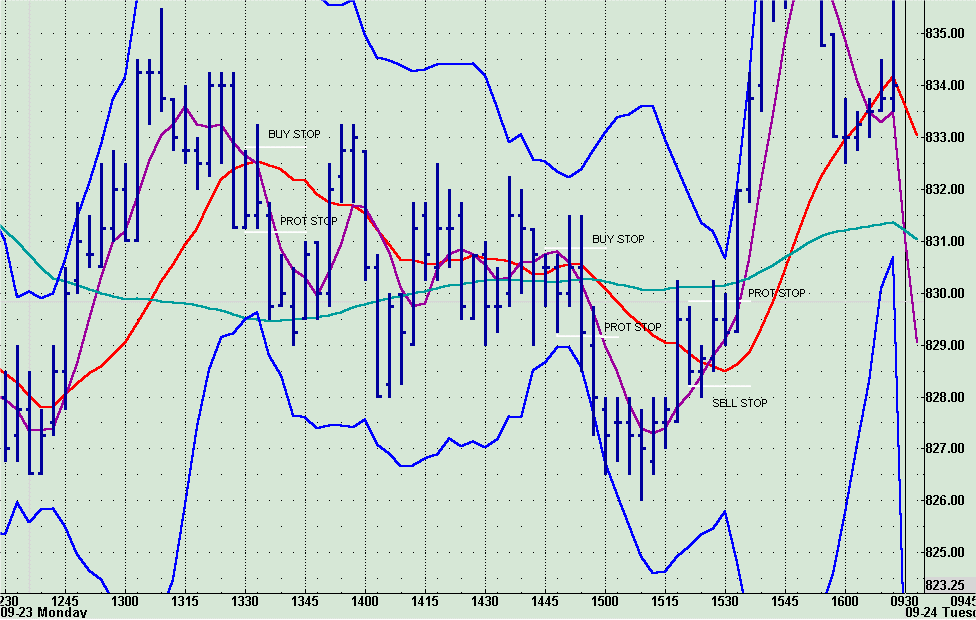Failed Setup Reversals
My trading setups utilize pullbacks in the
direction of the trend, with trend determined by the relationship of a
short-period moving average vs. a longer-period moving average (as in Don
Miller’s trading approach). I often find that as the pullback I am monitoring to
enter develops, the shorter MA gets very close to crossing the longer MA, which
would change the trend with the cross.
As I only trade pullbacks with the trend, if the MAs were to cross (during the
development of the pullback), I would have to have immediate follow through in
the trend direction, or I would abandon the pullback setup in progress, and wait
for a pullback in the other direction (as the cross changed the trend).
Given this trade setup preference (mine,
not necessarily Don’s), there will be setups entered that are taken with the
m.a.s close to but not yet crossing. Often, if this entry bar fails to carry
through, the MAs will cross resulting in a likely trend change. The stop placed
to protect the entry (at the high/low of the previous setup bar) can often be
seen as the entry price to trade as a pullback in the opposite direction (given
the MA crossing). The move in the opposite direction due to the failure of the
original setup can more than compensate for the loss on the failed setup.
To utilize this reversal trade, you must
closely watch the entry bar as it forms. If the MAs cross (or are so close that
a failure will effectively confirm the crossing), but you are not stopped out
on the bar after its completion (it may be very close to doing so), you would
then put in an additional order (same direction as original protective stop).Â
This would not have to be for the same quantity, could be more or less,
depending upon your preference. The next bar would more than likely resolve the
trend direction question.
The accompanying chart shows three such
setups as I would view them. The two MAs that I focus on for setups are the 5
and 15 (a 65 is also shown for reference to another time frame, but is not used
in trend entries as such). The pullback to the uptrend at 13:30 could still be
traded for long entry (buy stop). As the next bar completes, the follow through
is questionable. Even though the lows of the entry bar and previous are the
same, the entry bar could be seen as a rally in a downtrend (note the 5 m.a.
cross with the 15 MA).

Price could go either way at this juncture, but you now have 3 closes below both
MAs. The placement of an additional sell stop would then create a net short
position should price continue down and stop out the original long position.Â
This particular setup had to take in consideration the longer 65 MA as support,
so one would anticipate the down move to halt here (at least temporarily). Â This
reversal trade would have virtually covered the loss on the original stopped out
position assuming like quantities.
The next two reversal setups actually
resulted in a net profit after factoring in the original stopped out
positions. Some traders would avoid a setup with the MAs this close because of
the uncertainty of the trend. There certainly would be nothing wrong with doing
so. For those of you who would chose to take the original setup, as follow
through would likely result in continuation of the original trend, this reversal
trade setup may be something you can benefit by.
Keep in mind, of course, that the reversal could in turn fail, and reverse back
in the original direction, with a loss on both positions. With both MAs
virtually flat and crossing back and forth, this could certainly happen, so one
should avoid these periods.
Perhaps your setups are different, but
have the same reversal implications at certain junctures. Study these closely
to see if a similar strategy could be employed to increase your long term
results.
Kirk Bruening
